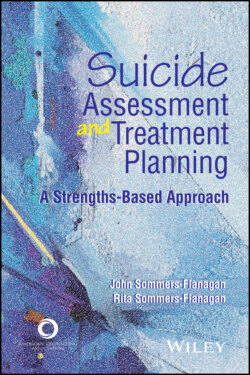Читать книгу Suicide Assessment and Treatment Planning - John Sommers-Flanagan - Страница 44
Competency 2: Develop and Maintain a Collaborative, Empathic Stance With Clients
ОглавлениеWhen clients disclose suicidality, conflicts between clinician goals and client goals arise (AAS, 2010). Clients who present with suicidal ideation or impulses are often expressing a desire to die; in contrast, your professional goal is to help clients stay alive. This inherent conflict makes it difficult to establish collaborative relationships (Jobes, 2016).
Clients know their pain and the nature of their suffering. If clinicians do not honor client perspectives, clients can refuse to open up; they can slide the deadbolt to their inner thoughts and feelings and block clinicians from gathering information. A collaborative attitude requires respecting client perspectives. That often means honoring your clients’ desire to keep suicide as an option to life. Pushing against clients’ rights to die by suicide may activate psychological reactance or resistance and end up pushing them toward, rather than away from, suicide (Brehm & Brehm, 1981; J. Sommers-Flanagan & Shaw, 2017). A collaborative relationship is central to all contemporary and evidence-based approaches to suicide assessment and management (Bryan & Rudd, 2018; Jobes, 2016; Wenzel et al., 2009).
Regardless of your clients’ problems, empathy is a robust predictor of positive counseling outcomes (Elliott et al., 2018). Maintaining empathy with clients who are suicidal can mean that counselors accept and try to understand intense emotional pain. Unremitting hopelessness is common (e.g., “Nothing will ever help me feel better”). If clinicians pivot away from emotional pain and hopelessness and bring up solutions too quickly, clients may feel isolated, misunderstood, or judged. It can be uncomfortable to continue paraphrasing and resonating with your client’s emotional pain, especially when your goal is to nudge your client toward a safety plan or hospitalization.
Although working with suicidality requires a specific knowledge base and skill set, many basic counseling skills transfer. Skills for working collaboratively, showing empathy and positive regard, and using problem-solving form the foundation for effective suicide assessment and treatment (Michel & Jobes, 2010). Continuing to develop your general counseling skills, obtaining specific suicide-relevant workshop training, and studying from resources like this book will help you establish competency.
